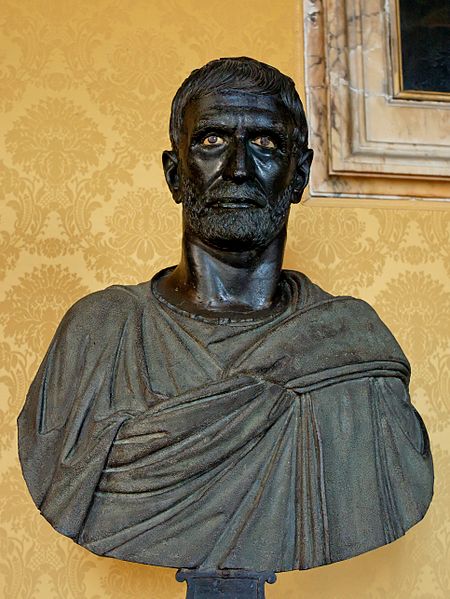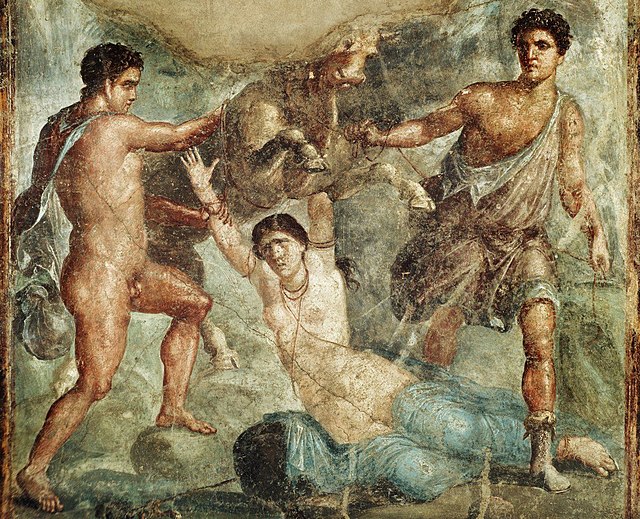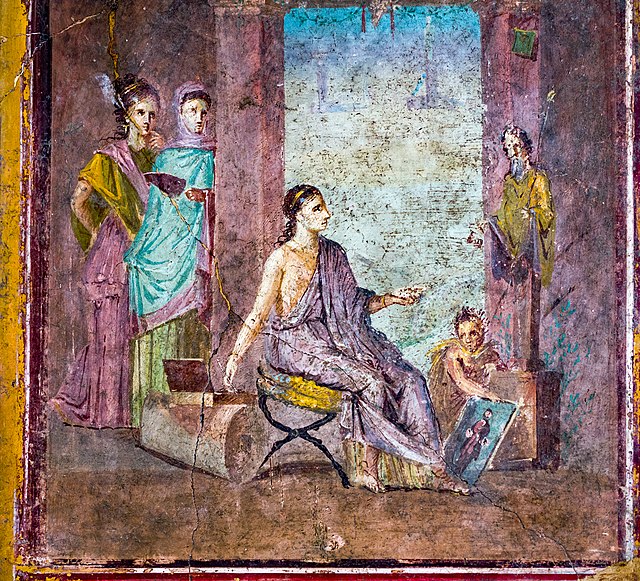Roman portraiture was one of the most significant periods in the development of portrait art. The surviving portraits of individuals are almost entirely sculptures, covering a period of almost five centuries. Roman portraiture is characterised by unusual realism and the desire to convey images of nature in the high quality style often seen in ancient Roman art. Some busts even seem to show clinical signs. Several images and statues made in marble and bronze have survived in small numbers. Roman funerary art includes many portraits such as married couple funerary reliefs, which were most often made for wealthy freedmen rather than the patrician elite.
Roman portraiture is characterized by its "warts and all" realism; bust of Lucius Caecilius Iucundus, a cast from the original in bronze, found in Pompeii, now in the Naples National Archaeological Museum
Veristic portrait bust of an old man, head covered (capite velato), either a priest or paterfamilias (marble, mid-1st century BC)
The Capitoline Brutus in the Musei Capitolini, possibly portraying Lucius Junius Brutus, dated late 4th century BC to early 3rd century BC
The Orator, c. 100 BC, an Etrusco-Roman bronze statue depicting Aule Metele (Latin: Aulus Metellus), an Etruscan man wearing a Roman toga while engaged in rhetoric; the statue features an inscription in the Etruscan alphabet
The art of Ancient Rome, and the territories of its Republic and later Empire, includes architecture, painting, sculpture and mosaic work. Luxury objects in metal-work, gem engraving, ivory carvings, and glass are sometimes considered to be minor forms of Roman art, although they were not considered as such at the time. Sculpture was perhaps considered as the highest form of art by Romans, but figure painting was also highly regarded. A very large body of sculpture has survived from about the 1st century BC onward, though very little from before, but very little painting remains, and probably nothing that a contemporary would have considered to be of the highest quality.
A fresco depicting wedding. In the center, a young bride is comforted and supported by Venus. 1st century BC, Rome
Preparation of an animal sacrifice; marble, fragment of an architectural relief, first quarter of the 2nd century CE; from Rome, Italy
A Roman fresco depicting Amphion and Zethus subject Dirce to the bull (from the House of the Vettii, Pompeii)
Female painter sitting on a campstool and painting a statue of Dionysus or Priapus onto a panel which is held by a boy. Fresco from Pompeii, 1st century








